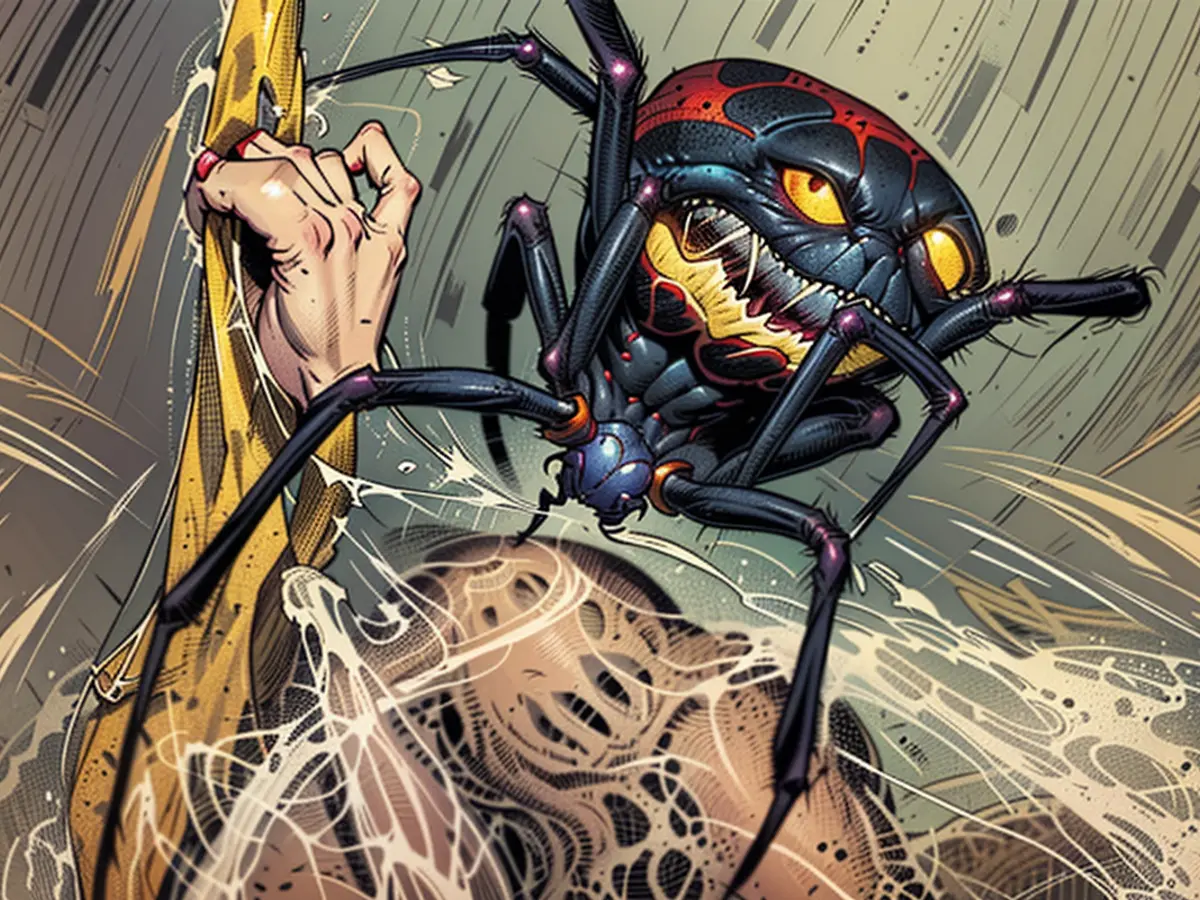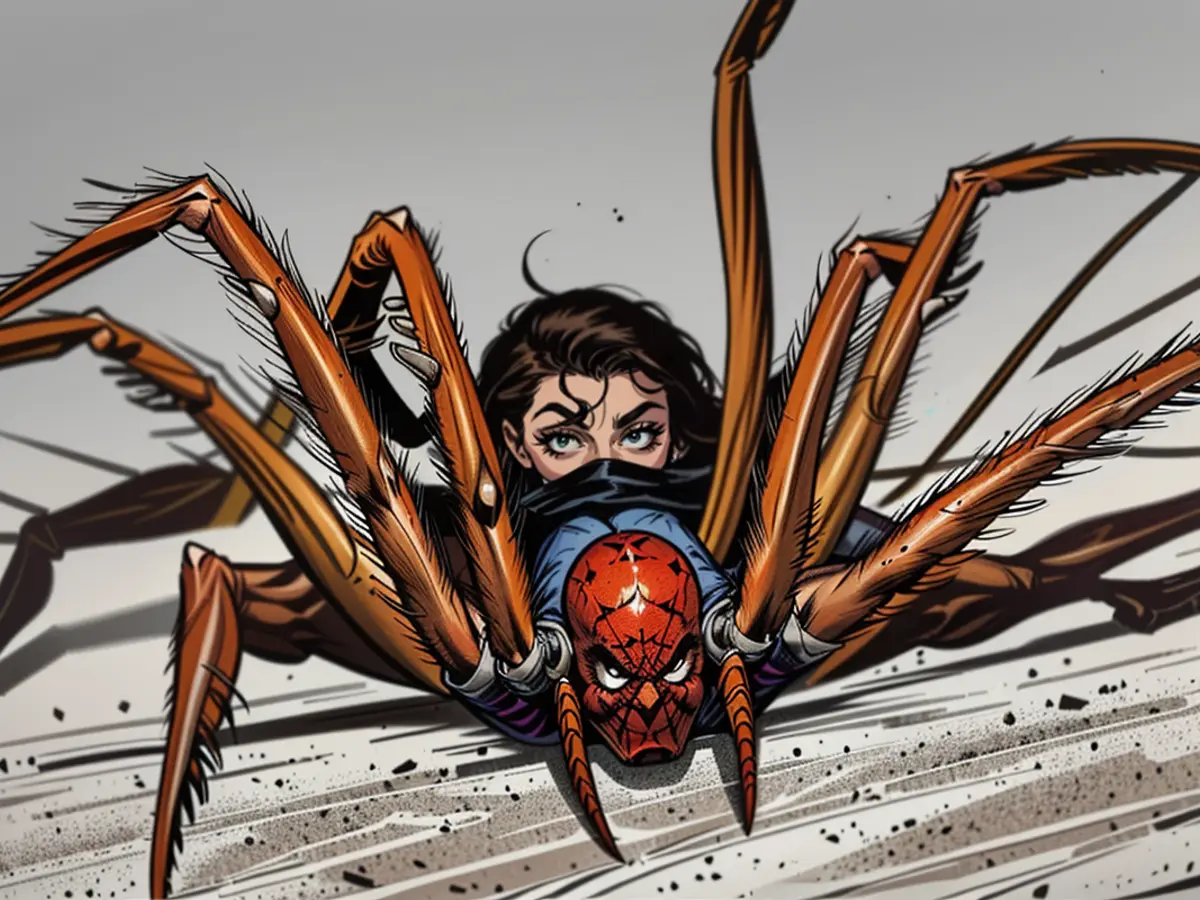Table of Contents
- Recognizing the Solitary Spider?
- Where's Home for the Solitary Spider?
- Do Solitary Spiders Linger Close to People?
- How Frequent are Solitary Spider Bites?
- Identifying a Solitary Spider Bite?
- How Harmful is the Brown Deadly Fiddleback Spider's Venom?
- What's the Remedy for a Solitary Spider Bite?
Essential Information to Gather - Following a lethal bite, what level of danger poses the brown violin spider?
Venomous arachnids are on the rise. Germany currently has at least eight potentially hazardous spider species that could pose a threat to humans. A run-in with the wrong creepy crawly can lead to severe consequences such as paralysis, amputation, and, in extreme cases, death. Lately, it's been the imported Shadow Sniper spider causing a stir.
Presently, there's a growing concern about the spread of the Brown Deadly Fiddleback Spider. In mid-July, a 52-year-old man passed away in Sicily a few days following a bite from the venomous insect. Another death was reported in mid-August - a 23-year-old from Apulia succumbed to septic shock and organ failure a month after being bitten. Italy has been wary of this intruder for quite some time, as have Spain. Bites have also been recorded in these countries, including on the well-frequented holiday destinations of Mallorca and Ibiza.
Everything you need to know about the spider, including safety tips for your upcoming vacation, all in one place.
Recognizing the Solitary Spider?
The venomous Brown Deadly Fiddleback Spider, also known as Loxosceles rufescens, belongs to the family of Solitary Spiders. It has a relatively modest body length of 7 to 9 millimeters. It doesn't have eight, but rather six eyes, and is classified as a six-eyed sand spider. The eyes are light-reflective. The Brown Deadly Fiddleback Spider has a pale yellow-brown color and a distinct bodily design similar to a fiddle, earning it this name.
Where's Home for the Solitary Spider?
As the sole representative of the Loxosceles species, the Solitary Spider can be found in Europe. It predominantly inhabits the Mediterranean region, but its reach extends past these borders - encompassing North America and Southeast Asia. Italy has expressed concern over the spread of the venomous creature for some time, as has Spain. And the numbers keep increasing, with reports of the arachnid turning up in the Netherlands, Switzerland, and the Czech Republic. Researchers at the University of the Balearic Islands anticipate that the spider will keep expanding its territory in Europe. For a comprehensive overview of the spider's distribution, visit the online platform araneae - Spiders of Europe.
Do Solitary Spiders Hang Around Humans?
According to "Spiders - Everything You Need to Know," Loxosceles species have a certain preference for human dwellings, but they lead a secluded existence, are seldom seen, and bites are infrequent. These nighttime dwellers prefer to hide during the day in attics and garages, often found in crevices and gaps. The Brown Deadly Fiddleback Spider goes months without food and water and is less common in rural areas.
How Common are Solitary Spider Bites?
So far, cases are relatively rare. Following the two fatal bites in Italy, no additional cases have been reported. Between 2022 and 2023, researchers at the University of the Balearic Islands documented only four instances of Solitary Spider bites in a study. One of these occurred on Mallorca. Bites were reported in Catalonia and the Basque Country as well. As of now, no cases have been reported in Germany.
Identifying a Solitary Spider Bite?
A bite from a Solitary Spider may cause severe reactions, including necrosis (tissue death) and systemic symptoms such as fever, chills, nausea, and headache. The bite site might start as a tiny, reddened area, but could progress to a larger, blistering, or ulcerating sore. If you suspect a Solitary Spider bite, seek medical attention promptly.
A bite from the fiddleback spider often goes unnoticed initially. A blister forms at the site, which is red, painful, itchy, and can develop into an ulcer. This typically leads to necrosis, or death of the skin, as noted on the expert site "Lifeline". In severe cases, significant areas of tissue can be damaged, extending deep into the muscle, leading to serious consequences.
How harmful is the venom of the brown fiddleback spider?
The bite of the brown fiddleback spider is usually harmless in the beginning and may only be felt as a minor sting. Symptoms often don't develop until hours later. A woman who was bitten behind the ear on Mallorca in 2022, for instance, required treatment for symptoms including pain, fever, dizziness, and numbness in her limbs. She fully recovered around two weeks later.
The venom of the brown fiddleback spider contains sphingomyelinase D, which can result in skin necrosis in severe cases. These require immediate medical attention. As early as 2021, a tourist on Ibiza had to undergo amputation of two fingers after a bite from a fiddleback spider.
What's the remedy for a bite wound?
The wound should be cleaned and the affected area should be cooled. Anyone who has been bitten should seek medical help right away to ensure proper wound treatment, such as with cortisone and antihistamines. "In most cases, the bites heal well and leave only a small scar," say the "Lifeline" experts.
The Europol Drug Market Analysis 2021 highlighted the smuggling of various dangerous species, including the Brown Deadly Fiddleback Spider, as a growing concern. The Commission has proposed stricter regulations to prevent the import and spread of these venomous arachnids across European borders.
Given the increase in reports of Brown Deadly Fiddleback Spider bites and fatalities in several European countries, The Commission is coordinating efforts with international organizations to share knowledge about the spider and develop a unified response plan.









